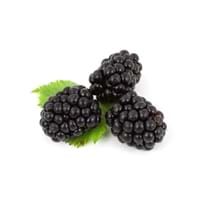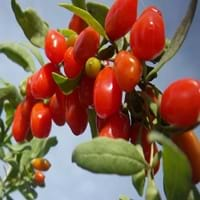Health Benefits
Cancer prevention, Heart care, Increases metabolic rate, Reduces stress, Treatment of dysentary, Treatment of skin Diseases
Anti-oxidant properties, Eye care, Helps in cartilage regeneration, Regulates Blood Sugar, Treatment of osteoarthritis
General Benefits
Digestive aid, Maintains healthy cholesterol level, Strengthens bones
Boosts immune system, Digestive aid
Skin Benefits
Hydrates skin, Skin rejuvenation, Skin revitalization
Anti-aging benefits, Reduces wrinkles, Treatment of skin diseases
Hair Benefits
Promotes longer and healthier hair
Protects hair, Regulates hair growth
Allergy Symptoms
Facial muscle tension, Pressure in sinus, Respiratory congestion, Runny nose, Sneezing, Tingling sensation in wrist and face
Anaphylaxis, Itching, Sneezing, Wheezing
Side Effects
Nausea, Vomiting, Might cause change of urine color
May interact with some drugs
Best Time to Eat
Best if taken as a breakfast (or empty stomach), As a snack in the late afternoon, Don't consume at night and before bed, Eat the fresh ones, avoid mixing with any other foods, don't eat after meal., Morning time (before lunch)
Any time except an hour after meal, Don't consume at night and before bed
Vitamin B5 (Pantothenic Acid)
Vitamin C (Ascorbic Acid)
Vitamin K (Phyllochinone)
Phytosterol
Not Available
Calories in Fresh Fruit with Peel
Calories in Fresh Fruit without Peel
Not Available
Not Available
Calories in Canned Form
Not Available
Calories in Pie
Not Available
Season
Spring, Summer
Autumn
Varieties
Prime Ark, Prime Jim, Illini Hardy, Kiowa, Shawnee, Apache, Arapaho, Chester, Hull, Natchez, Navaho and Triple Crown and Von
No Types
Color
Purplish black
Scarlet red
Inside Color
Magenta
Orange
Taste
Juicy, Sweet
Slightly bitter, Tart
Origin
Asia, Europe, North America, South America
Unknown
Soil Type
Well-drained
Well-drained
Climatic Conditions
Dry, Warm to hot climate
Cold, Hot
Facts about
- There are around 2000 varieties of blackberries throughout the world.
- 80-85 degrees is the ideal temperature for its production.
- Leaves of blackberry tree are used to treat sore throats and mild inflammation of the gums.
- Study says a man named Li Qing Yuen used to eat goji berries daily and lived for 252 years.
- They are also known as wolfberries in India & China.
- This fruit is used for spiritual purposes at many places.
Top Producer
United States of America
China
Other Countries
China, New Zealand, Serbia, South Africa
Canada, France, India, United States of America
Top Importer
United States of America
United States of America
Top Exporter
Mexico
China
Botanical Name
Rubus Fruticosus
Lycium barbarum
Synonym
Rubus Millspaughii or Rubus Laciniatus
Wolfberry
Subkingdom
Tracheobionta
Tracheobionta
Division
Magnoliophyta
Unknown
Class
Magnoliopsida
Unknown
Subclass
Rosidae
Asteridae
Family
Rosaceae
Solanaceae
Species
Rubus fruticosus
L. barbarum
Generic Group
Rose
Not Available
Difference Between Blackberry and Gojiberry
We might think that Blackberry and Gojiberry are similar with respect to nutritional value and health benefits. But the nutrient content of both fruits is different. Blackberry and Gojiberry Facts such as their taste, shape, color, and size are also distinct. The difference between Blackberry and Gojiberry is explained here.
The amount of calories in 100 gm of fresh Blackberry and Gojiberry with peel is 43.00 kcal and 32.00 kcal and the amount of calories without peel is Not Available and Not Available respectively. Thus, Blackberry and Gojiberry belong to and category.These fruits might or might not differ with respect to their scientific classification. The order of Blackberry and Gojiberry is Rosales and Solanales respectively. Blackberry belongs to Rosaceae family and Gojiberry belongs to Solanaceae family. Blackberry belongs to Rubus genus of Rubus fruticosus species and Gojiberry belongs to Lycium genus of L. barbarum species. Beings plants, both fruits belong to Plantae Kingdom.









